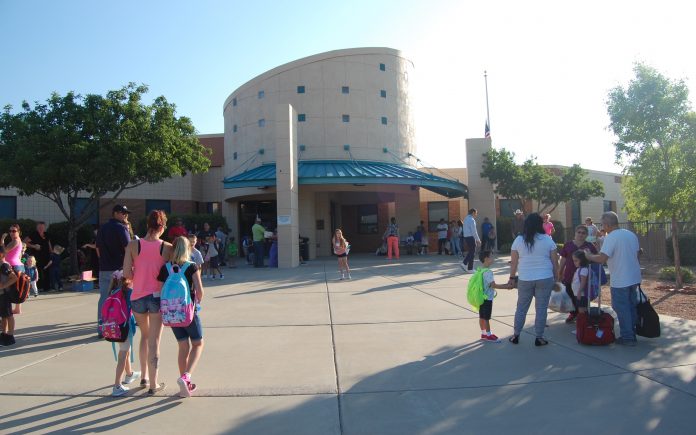The COVID-19 pandemic has been spiking in the Verde Valley in recent weeks.
For the area’s schools, which have been closed since March, the question of what will happen in the fall remains unresolved. Administrations and school boards are working on ways to try to reopen safely.
An executive order from Arizona Gov. Doug Ducey issued June 29 postponed the first day of school for in-person learning throughout the state “but schools may begin the school year on their regularly planned start date prior to Aug. 17, 2020, through distance learning,” the order read.
While children are at low risk of becoming seriously ill or dying from COVID- 19, health officials are still concerned about how reopening schools would allow spread of the virus among the general population, including high-risk groups.
“There’s a lot of difficulty with just allowing kids to get COVID-19, even though it could build them immunity,” Yavapai County Community Health Services Director Leslie Horton said. “In the process they take it home to a grandparent, or the teachers who may have a compromised immune system of advanced age. In my mind it’s not the children necessarily who are at risk.”
The status of school after Aug. 17 still remains unclear.
Mingus Union High School District Superintendent Mike Westcott said he doesn’t think that the district can commit to in-person learning.
“That’s our goal, I think you could say, and we’re going to start the plan for a full reopening with every- body physically back on campus, but we’re going to simultaneously plan for both a hybrid with some on-, some off-campus, and simultaneously plan for full distance learning,” Westcott said.
Different districts are also looking at differing guidelines. Whereas Camp Verde Unified School District Superintendent Danny Howe said that he hopes to open schools as soon as permitted, other districts have indicated a desire to discuss the situation with health experts.
“We’ll start with in-person instruction when we believe it’s best for the families and students,” Westcott said.
Even if in-person instruction does happen, it will likely still be far from the normal from year’s past, with measures aimed at safeguarding students.
“You’re going to see more of that social distancing concept,” said Clarkdale-Jerome School District Superintendent Danny Brown, who is also planning three different reopening plans. “We’re not going to be holding assemblies or things that bring people together in a communal group.”
School districts are trying to figure out how to handle masks, understanding that it might be hard to enforce strict discipline among younger children. Some of the guidelines would not be possible.
“The state of Arizona has one of the highest student-to-teacher ratios across the United States,” Brown said. “That presents a challenge of how to socially distance 30 kids in a classroom.”
At a June 16 CVUSD Governing Board meeting, Howe told the board that things like temperature scanning students every day and other recommendations did not make sense for their district.
“There’s a lot of things that are recommended by the CDC. Some of those things that are recommended are just not feasible,” Howe said. “They’re recommending one student per seat on the bus, with every other seat alternating. An 84-seat passenger bus has 28 seats. We’re only going to get 14 kids on the bus at a time. So we look at that and we say it’s probably not feasible if we want to get all of our kids to school on time.”
Administrators worry not just about the degree to which they can stop the spread of the virus, but also about the response from families and whether parents feel safe sending their students to school. If the schools open but a significant portion of students do not show up for instruction, that could affect the district’s average daily membership, which would mean a drop in funding from the state.
“If a student or a parent aren’t comfortable for health reasons, we certainly don’t want to force people to come to school if health doesn’t allow it,” Howe said. “In three weeks, something may change that may cause us to say, ‘You know what, we need to either add this in or take this out given the circumstances.’”
MUHSD is giving families the choice of enrolling their children either for in-person learning or remote learning, hoping to give them a choice on a case-by-case basis, if the schools can open up. On July 1, Cottonwood-Oak Creek School District sent a survey to families asking about their comfort with sending their children to school in person and their ability to handle virtual learning.
After a spring where school districts responded to closings by implementing a somewhat relaxed and usually informal online learning curriculum, districts are making an effort to ensure that any online learning in the fall will be, to the best of teachers’ ability, a real replacement for the classroom, featuring grades, tests and regular attendance.
“What we’re looking at right now is an online curriculum combined with teacher contact and assistance,” King said. “It would be following the Arizona state standards, and we want to match it up as close as possible with our internal pacing guides.”



